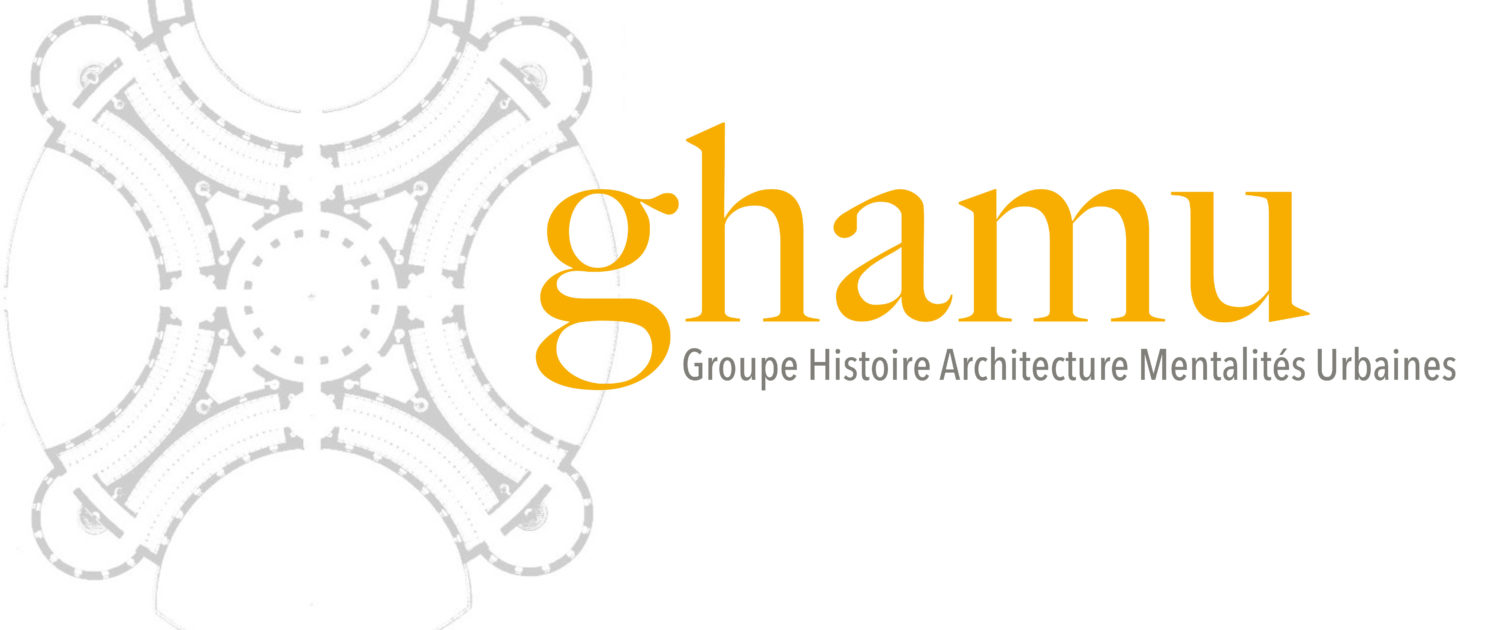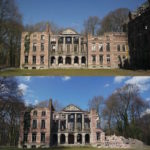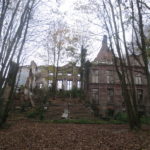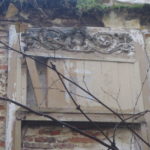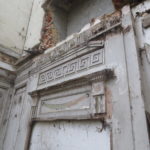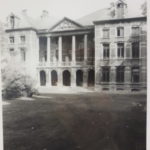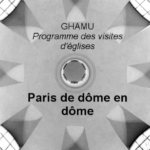Le Château de Lede (Belgique)
En cette année consacrée à la célébration du 250e anniversaire de la mort de Jean-Nicolas Servandoni (1695-1766), nous venons d’apprendre que l’une des œuvres majeures réalisées par l’architecte en Belgique, le château de Lede, risque de disparaître. On présente ici un article envoyé par Carlo De Caluwé, Master II en Conservation des Monuments de l’Université d’Anvers, qui prépare actuellement un mémoire sur le château de Lede.
En cette année consacrée à la célébration du 250e anniversaire de la mort de Jean-Nicolas Servandoni (1695-1766), nous venons d’apprendre que l’une des œuvres majeures réalisées par l’architecte en Belgique, le château de Lede, risque de disparaître.
Transformé en école à la fin du XIXe siècle, puis abandonné en 1970, ce monument n’a pas jusqu’à maintenant retenu l’attention de l’administration locale. Exposé aux intempéries, faute d’entretien et de travaux de restauration, il a vu son aile droite s’écrouler lors d’une tempête arrivée l’hiver dernier.
La restauration et la conservation de ce rare témoignage du passage de Servandoni en Belgique s’impose.
On présente ici un article envoyé par Carlo De Caluwé, Master II en Conservation des Monuments de l’Université d’Anvers, qui prépare actuellement un mémoire sur le château de Lede.
Castle of Lede
Context and situation that led to the decay
The castle of Lede has for centuries been the home of noble lords with international fame. In the 60’s of the 18th century, the very last marquis that lived in the castle, ordered the famous architect Servandoni to create a new façade for his feudal looking building, as well as to redecorate the entire interior. After this nobleman passed away, the castle was used for industrial purposes and hosted a school, leaving the castle and Servandoni’s interventions untouched during these new functions. However, in 1970 the school had to close because of a changing educational system, which left the castle and its surrounding buildings empty. The school was governed by a very powerful institute which now wanted to make as much money as possible out of selling the whole domain. Off course the best way to do this, is to demolish the existing buildings and sell the ground as building plots. The Flamish government however, marked the domain on their urban plans as being a ‘park zone’. This meant the institution had no way of selling these grounds as building plots, and the value of ‘park ground’ is significantly less than ‘building ground’. As a reaction to this, they did not want to sell the domain anymore and they let the buildings fall apart by not maintaining them anymore. When the government saw this, they urgently started a procedure to protect the valuable buildings as a monument so the institute would be obliged to repare the buildings. This was successful, however after three years of being protected, the institute pulled some political strings and got their buildings to be ‘unprotected’. After this, many years of endless discussions about the selling price between the town of Lede, that wants to buy it, and the institute pass, whilst the buildings start to decay and collapse. Roofs begin to leak, windows get broken and vandals are breaking in to demolish or steal building elements. The people of the community try to re-open the protection procedure, but by this time complete roofs, floors and walls are already gone. The government declines the procedure because the reconstruction would be too costly. Eventually, the government decides to handle the situation from above, and dissolves the institute, it does not exist anymore and has no more juridical power. This is when the town of Lede is finally able to buy the domain in 1999. But instead of a magnificent building complex with a wonderful park, they get a wild forest with ruins in it. In the meanwhile, all of Lede’s plans from the 70’s to move all of the towns public functions (library, police station, music academy, firestation, theater, …) into the complex are useless because after all of these years of discussing prices, all of these functions were already relocated. So Lede has no program for the buildings and no money to restore them. The decay continues like the last 30 years… Years pass by until there’s finally a masterplan. Most of the additional neogothical buildings would be demolished, a new care center would be build and the ruins of the castle would be consolidated. The investors to sponsor this project retreat however, so in 2015 also the giant neogothical schoolwing attached to the castle had to be demolished since there was no money to restore it. This building acted as a wind shield, leaving the castle unprotected in an open plain now. While the ruin of the castle did not have any major collapses during the last 25 years, now the wind takes down enormous parts of the building. All plans are ready to start the consolidation of the castle, which would be its rescue, but everytime there’s a collapse, these plans have to be adjusted, which takes another few months to do. In the meanwhile, the ruin has no extra structural support, so it keeps on collapsing, leaving the remaining parts weaker. This situation of plans being finished to start the consolidation and then having to be postponed because there’s another collapse, is going to be repeated until there’s nothing left anymore. Then the town council doesn’t have to worry about this piece of shame in their town anymore.
Value of the castle and urgent interferences needed to save it
The castle has a very great historical value, just like all of the other castles in Belgium which are listed as monument. The history of the domain dates back to the Roman period and the present building was built in the 16th century, which makes it the oldest building in the town. Also the cultural value is present. The building still shows several building periods, representing the noble lords, the industrial era and the catholic school. All of these phases played a crucial role in Lede and even in the rest of the country. But the greatest value lies in its architectural value. After almost 50 years of decay, the ruin standing today still has the complete façade as designed by Servandoni. Also the collapses coincidentally took place in the parts where Servandoni’s interior design was already removed in the 19th century, leaving us today with a ruin that only has rooms left where fragments of the original Servandoni-work is located. So yes, the damage is really bad, but the most important elements are still standing!
The following has to happen as soon as possible to save what is left:
The ruin has to get an external structural steel skeleton to make it stable again. The building has never been more fragile than it is now, so the sooner this would be placed, the better. Once this is installed, no more collapses can occur and the town council has as much time as they need to come up with solutions or new plans.
A new protection procedure has to be started up. Not to protect it as a monument, because restoration is impossible on this point, but to protect it as a historical ruin. This way Lede can get a premium from the government for the consolidation and, maybe more important, advice of experts about how to handle the ruin. I myself am now finishing a historical research about the domain that shows that the castle is of a much greater historical importance than the existing literature knows about. I hope that with this new information, I would be able to convince the government to approve this protection.
